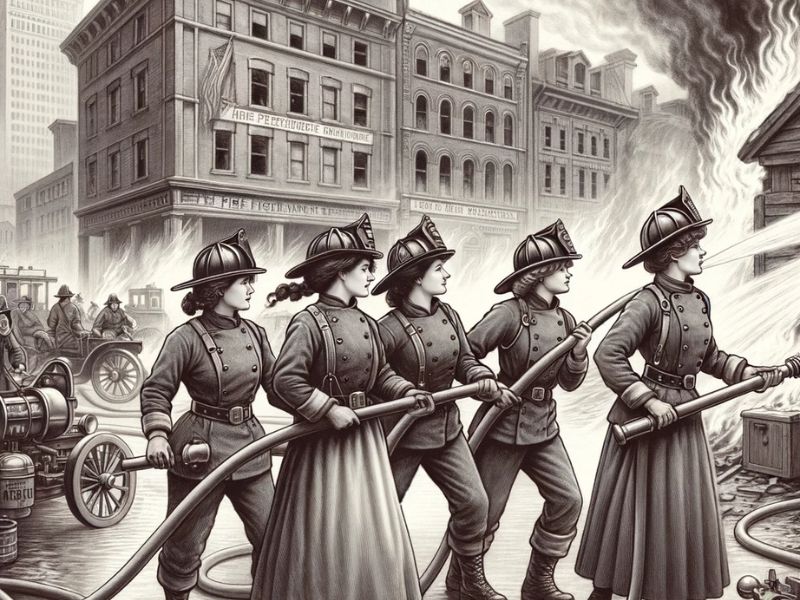
First female fire heroines: the history of the women's brigade in the 1800s
The Pioneers in the Fight Against Fires in the Victorian Era
The Early Flames of Change
The history of women in firefighting has deep roots dating back to the early 1800s. One of the earliest documented female firefighters was Molly Williams, a member of Oceanus Fire Company No. 11 in New York in the early 19th century. Her contribution became particularly notable during a snowstorm in 1818 when many volunteers were absent due to influenza, and she actively helped extinguish fires. However, the formation of an all-female firefighting brigade in the late 1800s was a significant and unprecedented event. Girton Ladies’ College in Britain established an all-female firefighting brigade from 1878 until 1932, serving as a milestone for women’s involvement in this field.
Boldness in Organization
In the United States, women actively became involved in firefighting, especially during wartime when men were at the front lines. During World War I and World War II, many women joined volunteer firefighting services to replace men who were called to serve in the military. In this context, several all-female firefighting companies were formed. For instance, in the 1960s, in King County, California, and Woodbine, Texas, all-female firefighting companies developed, with women taking active and essential roles in firefighting and fire control.
Evolution Over Time
The journey of women in firefighting has been long and filled with challenges. Over time, they gained more recognition and acceptance, especially after the approval of the Civil Rights Act of 1964 in the United States, which made it illegal for fire departments to prevent women from applying as firefighters. This paved the way for more women to enter active and paid roles in firefighting, as seen in the cases of Sandra Forcier and Judith Livers in the 1970s.
The history of women in firefighting, particularly that of the late 1800s all-female brigade, represents an important chapter in the long journey toward gender equality and fairness in the workforce. These pioneers have left a legacy of courage and determination that continues to inspire and influence future generations.
Sources


